
The AWD Ignis Aqua 290X 250D Mini ITX PC ships securely inside a strong outer box, with the main system protected inside the Corsair 250D Mini ITX Box.
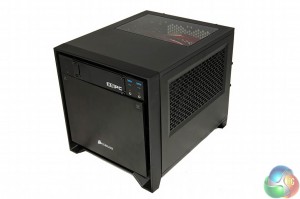
The Corsair Obsidian 250D case is a little beauty, and a great choice from AWD. We reviewed this case several months ago, and rated it very highly. If you want to recap on the indepth analysis, head over to this link.
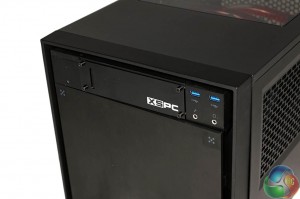
The custom XSPC reservoir is installed at the front of the case in the optical drive bay, shown above. Several USB 3.0 ports are located at the side, along with a microphone and headphone jack.
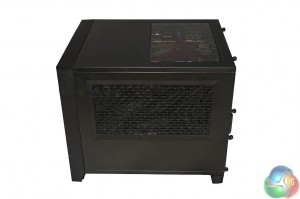
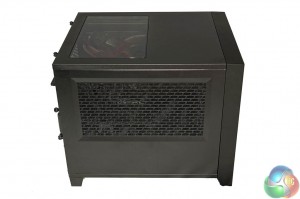
On such a small chassis, it is important to have the capabilities for plenty of airflow. Both 250D side panels are vented and populated with dust filters.
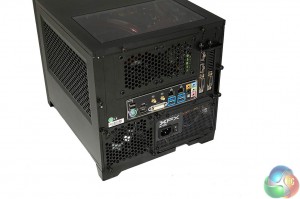
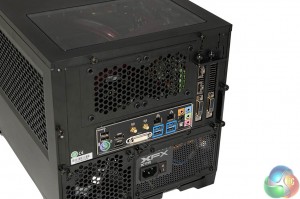
At the rear of the case we can see AWD are using an XFX XTR 650 watt power supply, installed at the bottom. None of the fan slots are populated at the rear, but we will look inside the case shortly. The AMD R9 290X graphics card is installed vertically at the side, so its important to note you don't connect the monitor to any of the integrated graphics connectors on the Gigabyte Z87N-Wifi motherboard.
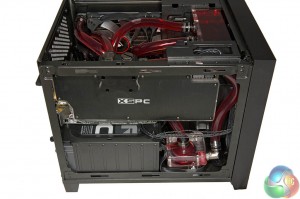
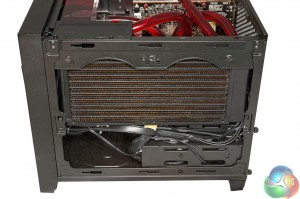
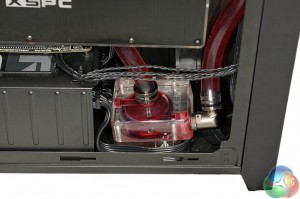
We removed all the 250D panels. One side exposes the custom XSPC liquid cooled R9 290X graphics card. The other side of the case is home to the 240mm radiator. All of the cables are pushed into the lower section of the chassis, hidden from view of the top window.
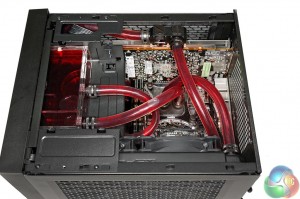
We removed the top panel to get a closer look at the build – this panel is windowed, so you can get a view of the rear half of the system. Its unfortunate that the Corsair Obsidian 250D panel hides the reservoir completely from view when it is installed.
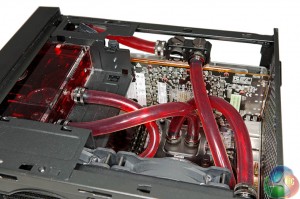
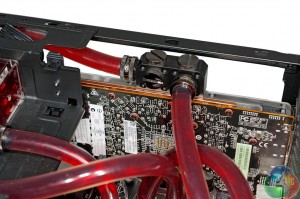
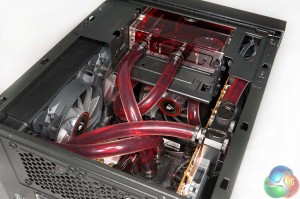
A few more pictures of the AWD Ignis Aqua 290X 250D Mini ITX PC – with all the panels removed.

A shot of the AWD Ignis Aqua 290X 250D Mini ITX PC system powered on. The red fan LED lights up the liquid. Its an attractive looking build.
 KitGuru KitGuru.net – Tech News | Hardware News | Hardware Reviews | IOS | Mobile | Gaming | Graphics Cards
KitGuru KitGuru.net – Tech News | Hardware News | Hardware Reviews | IOS | Mobile | Gaming | Graphics Cards



That big bubble tho…
I think with the size (or lack there of) of this build; I’d be using 3/8″ tubing, to make sure there’s no chance of kinks forming along some of those tight bends.
Also; it looks to have a DDC pump, if that’s the case, how much airflow is it actually going to get before it overheats in that little corner of the chassis?
I do like the fact that the system comes with a custom loop instead of one of those (awful) AIO systems.